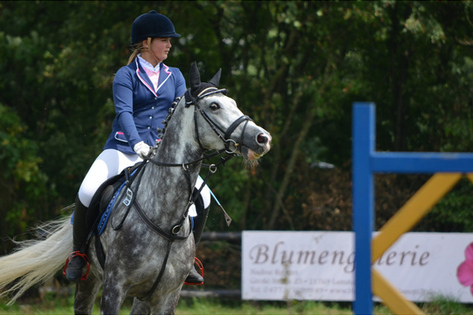
Are You & Your Horse Ready For Bitting Advice? The Steps You Need To Consider First
Equestrian Advice & Guides All Disciplines
Build your business profile for FREE and expose your services to thousands of potential clients!
Create my profile now!
Do you set your horse up in a nice rhythm only for him to throw his nose up and run through the last few strides to the fence? Rushing to a jump, or through a combination, is a common problem for many horse and riders.
Horses tend to rush at a jump when they misunderstand your aids; the more you take your leg off and try to slow him, the more he rushes. Often this is because the horse is worried that they do not have enough impulsion to clear the jump and rushing is their way of showing you they want a more positive approach to the fence.
It is important to correct this issue in the early stages of your training. Ultimately a horse can rush and successfully clear smaller fences but as you progress through competitive levels and face more advance jumps, you will encounter costly faults if your horse is rushing.
Firstly, it is important to ensure your horse is listening to you and responding to you slowing them down, not through force but with gentle half-halts preparing them for your next instruction. Working on a 20-meter circle, practice your trot to halt transitions. We do not want the horse to throw his head up in response to the half-halt, instead we are looking for the horse to focus, accept our aid and come to a nice halt when asked (do not worry if your horse comes through walk to halt, just keep practicing).
Once you are confident your horse is listening to these half-halts, try lengthening your trot and using a half-halt to bring your horse back, then do the same in canter. Perfecting these half-halts several times, and on both reins, before moving onto jumping will mean your horse is listening and will be less likely to run through your half-halt to the fence.
It is important to note, as your horse gets used to each jumping exercise you may see your horse start to rush again, for this reason it is important to mix up your exercises to keep your horse listening and stop him from becoming bored.
 Using a cross-pole, use a placing pole either side of the jump at 3.5-meters. The two ground poles will give your horse something to concentrate on before and after the jump, therefore naturally slowing him down.
Using a cross-pole, use a placing pole either side of the jump at 3.5-meters. The two ground poles will give your horse something to concentrate on before and after the jump, therefore naturally slowing him down.
Start this exercise in trot; as a rider you want balance your horse coming into this and allow the ground poles to act as your half-halt, keeping your reins soft. It is important to guide your horse straight with your legs, as this will give him the reassurance he needs and encourage him to think for himself over the exercise.
 If your horse goes to rush, simply sit up and halt him before the jump. It is important to keep him straight and not circle away from the jump; you can then continue to move forward in a controlled manner over the jump when you are ready. You can also bring him to a halt after the jump to ensure he is listening to you.
If your horse goes to rush, simply sit up and halt him before the jump. It is important to keep him straight and not circle away from the jump; you can then continue to move forward in a controlled manner over the jump when you are ready. You can also bring him to a halt after the jump to ensure he is listening to you.
As you repeat this exercise on both reins and your horse begins to relax, you can change to a vertical jump and also introduce canter; varying this exercise will keep your horse focused. When you are in full control, you can begin to remove the ground poles.

Starting with layout A, approach the cavaletti or a small jump in trot. You want to jump on the bend of the figure of eight, this will mean your horse is concentrating on balancing himself and will find it harder to rush at the jump.
As you ride the figure of eight, use half-halts to slow the pace as required but remember to keep your legs on as you approach the jump to give the horse confidence. As you jump you want to be looking in the direction you are traveling to next, and open your new inside hand in order to change the bend. If your horse lands in canter, bring him back to trot while continuing on the figure of eight before coming to the jump again.
Once your horse has relaxed and realised he doesn’t have to rush at the jump to clear it, you can complete this exercise in canter and add more cavalettis or jumps (see layout B).

